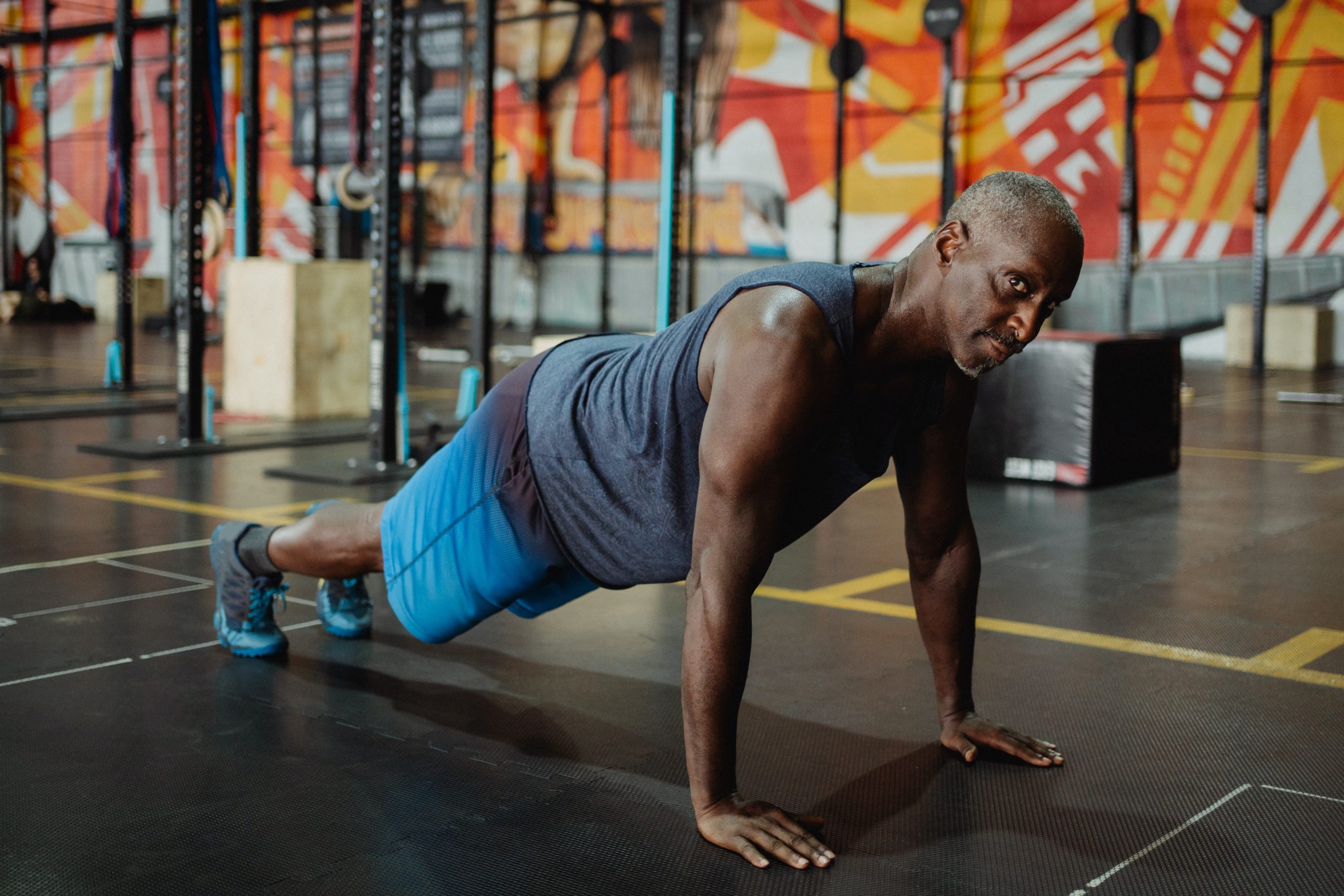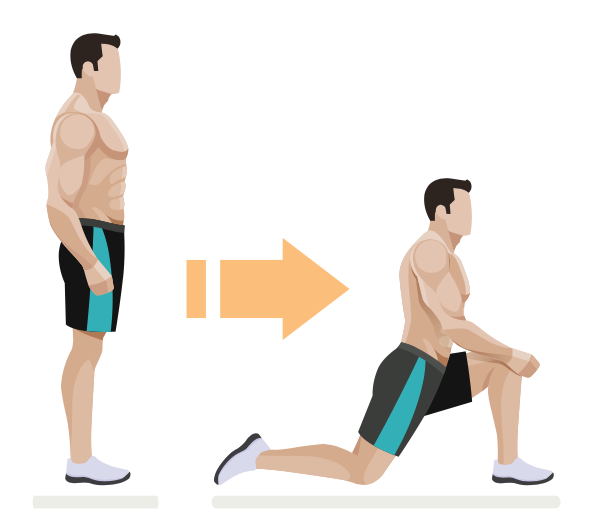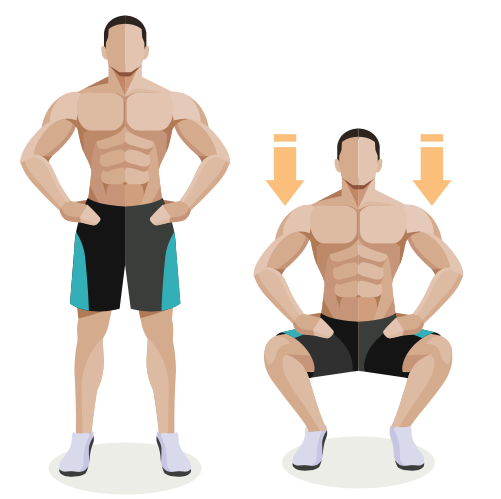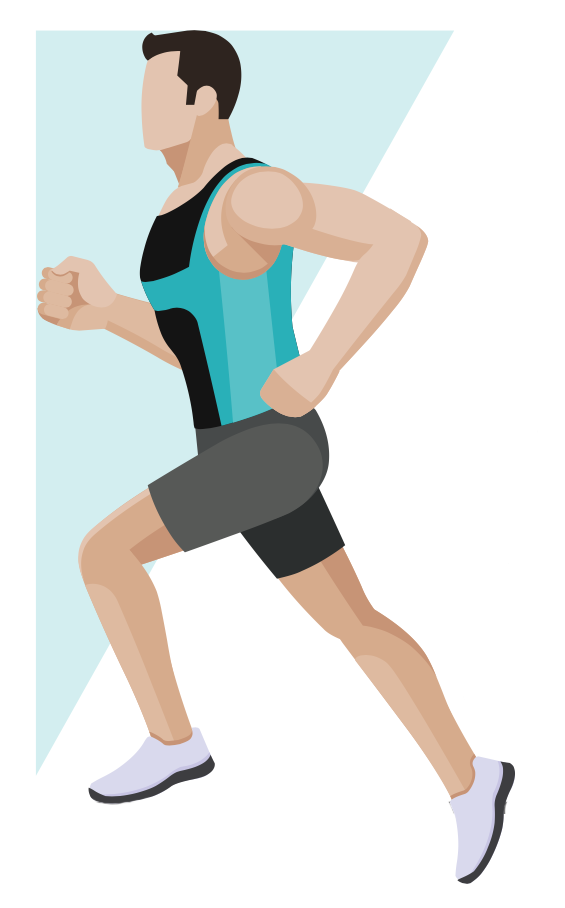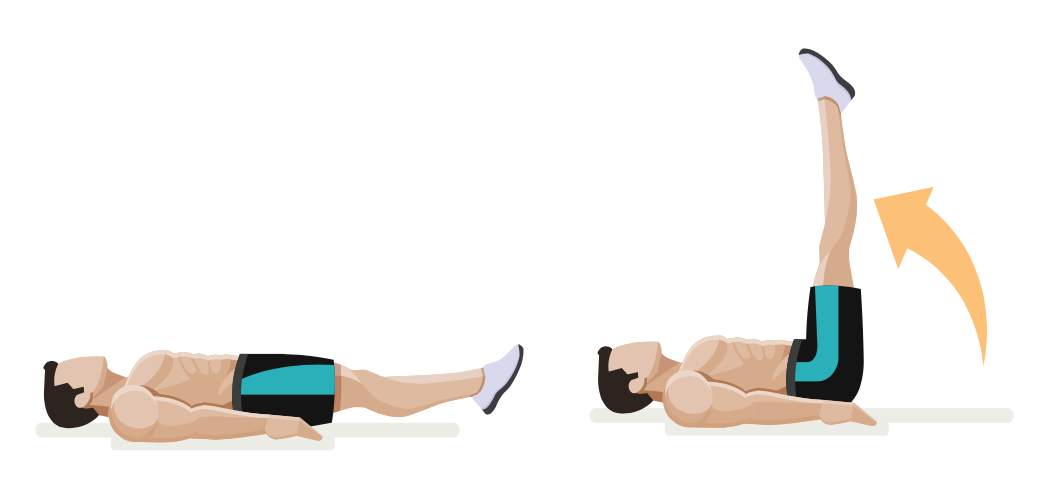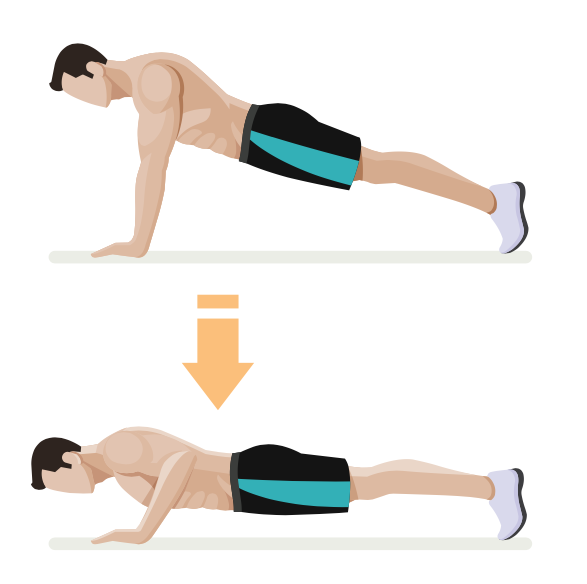There are some fitness basics that are available anytime, anywhere. Incorporating these into the weekly routine can provide additional tools to help adapt for whatever surprises 2021 brings!
The Department of Health and Human Services’ Physical Activity Guidelines for Americans recommends 150-300 minutes per week of moderate intensity aerobic exercise (or 75-150 minutes of vigorous intensity, or an equivalent combination thereof) along with at least two days of strength training per week. These basic exercises can help you achieve those goals by using bodyweight as the strength resistance.
LUNGES
Lunges are a popular bodyweight exercise that helps build strength and stability through the activation of a variety of muscle groups. They can also be performed anytime and anywhere with no equipment and limited space.
While performing lunges, hold your torso upright and step forward with one foot, ensuring that the knee doesn’t extend over the ankle on the front leg. In a slow and controlled fashion with uplifted chest, lower your body until your back knee touches the ground. Drive through your front heel and glute to push yourself back up to a standing position.
Lunges have many variations beyond the front lunge. The movement can be reversed for a backward lunge, sequenced together for a walking lunge, adding momentum for a jumping lunge, or used in the opposite direction for a side lunge or curtsy lunge. Each variation works slightly different muscles, so incorporating them all into your routine will provide the greatest benefit. Aim for three sets of ten repetitions per leg.
SQUATS
Squats are another excellent bodyweight movement that engage multiple muscle groups simultaneously. They are great strengthening exercises because they prepare us for many daily activities such as going from sitting to standing or entering and exiting a vehicle.
There are two primary types of bodyweight squats. The standard squat will begin with feet hip-distance apart, feet facing forward. Sinking the weight into the heels, squat down, keeping the chest lifted. You’ll want to continue sinking down until you are below parallel, then push through the heels to stand fully upright while squeezing the glutes.
Another variation is the sumo squat. For this movement, legs will be a little wider apart with feet turned outward at a 45 degree angle. The other mechanics remain the same. Sumo squats work slightly different muscles and are also a good option for beginners as the widened stance provides additional stability.
If needed, you can also squat down until you make contact with a chair, then drive upward. You can also hold on to a table or countertop for added balance.
Harvard Health recommends three sets of ten repetitions as part of an overall fitness program.
PLANKS
According to Harvard Health, planks are the best core strengthening exercise. Not only do they target the core, planks require multiple muscle groups to work together to support the body. They are a good representation of how the body moves in daily life. Having a strong core helps with improved posture as well as reducing pain in the hips and back.
To complete a plank, lie face down on the floor. Prop up on your forearms or extend your arms directly beneath the shoulders and allow your body to form a straight line from head to toe with gaze facing downward. The hips should be straight, not sunken or raised. Hold the plank for 10-30 seconds then rest. Aim to complete 2-3 sets. As your body adjusts, you can hold planks for 1-2 minutes at a time. You can complete planks daily, alternate days, or add to your regular fitness routine.
RUNNING AND WALKING
To hit the weekly aerobic activity goal, a great place to start is with the fundamentals of human movement. Regardless of your access to a fitness facility, running or walking can be done just about anywhere. If you have access to a safe outdoor space such as your neighborhood, a local park or the stadium, you can hit the pavement and get in some steps! Don’t let weather deter you. If outdoor conditions are less than ideal, try walking in the mall, a store or even within your own home. You’d be surprised how many steps you can accumulate cruising your local favorites! Pick up the pace for some power walking to increase heart rate.
If you’re looking to incorporate some running but aren’t sure where to start, try a Couch to 5K program that slowly increases the length of time you spend running versus walking. Easing into a running program will allow your body time to adjust to the increased intensity and minimize chances for injury.
LEG LIFTS
To build strength in the lower abdominal muscles and hip flexors, try leg lifts. These will challenge your core to create stability and flexibility over time. You will also build strength in the lower back as the opposing muscles work to stabilize the body.
It may take time to perfect leg lifts but use variations if needed. Start on the floor lying flat on your back. Lift both legs simultaneously until you reach a 90 degree angle, then return to approximately one inch off the ground, repeat. The goal is to move slowly through this exercise. Using momentum to get legs upright negates some of the benefits for the deeper abdominal muscles. If needed, place your hands underneath the tailbone for support. Brace your abdominals throughout this movement and keep your back flat against the floor. If needed, bend your legs. While this works slightly different muscles, it’s a good variation until you can safely perform the extended leg version. Aim for three sets of ten repetitions.
PUSH-UPS
Push-ups are a great exercise that also engage multiple muscle groups. To perform a standard push-up, first get into plank position with arms fully extended and elbows tucked in close to the side of the body. Lower the body down until the thighs and chest touch the floor, then push back up. Aim for a tempo of two seconds on the downward motion and one second to push back to starting position. Performing full range push-ups is the equivalent of lifting approximately 50-75% of your bodyweight.
If you’re not yet ready for standard push-ups, you can perform the same movement with knees on the floor, taking care to lower all the way to the ground before pushing back up. Another variation is performing the standard push-up against a wall or counter. These variations work the same muscle groups and are approximately equivalent to lifting 36-45% of your bodyweight with each repetition.
Focus on completing as many repetitions as you can with perfect form. If you feel your form is starting to suffer, rest and then start a new set. The number of recommended push-ups varies with age, as they can be tough on the shoulder joint and rotator cuff. While there are many push-up challenges circulating around the internet, daily push-ups are not recommended for the long-term. Muscle recovery is critical for preventing injury.
BACK TO BASICS
Whether or not you complete all your activity at home, incorporating basic bodyweight movements has great physical benefits. Knowing how to perform these movements safely can provide you with possibilities when other options aren’t available. Bodyweight movements are also a great way to incorporate some additional movement during travel or long stretches of desk work.
Related articles:
What Is The ‘Great Conjunction’ Of Jupiter And Saturn?
Anger Issues: Signs That Your Irritability Is Something More
Ted Talks: Time To Flex And Stretch
What Is Wabi Sabi: Embracing Imperfection

